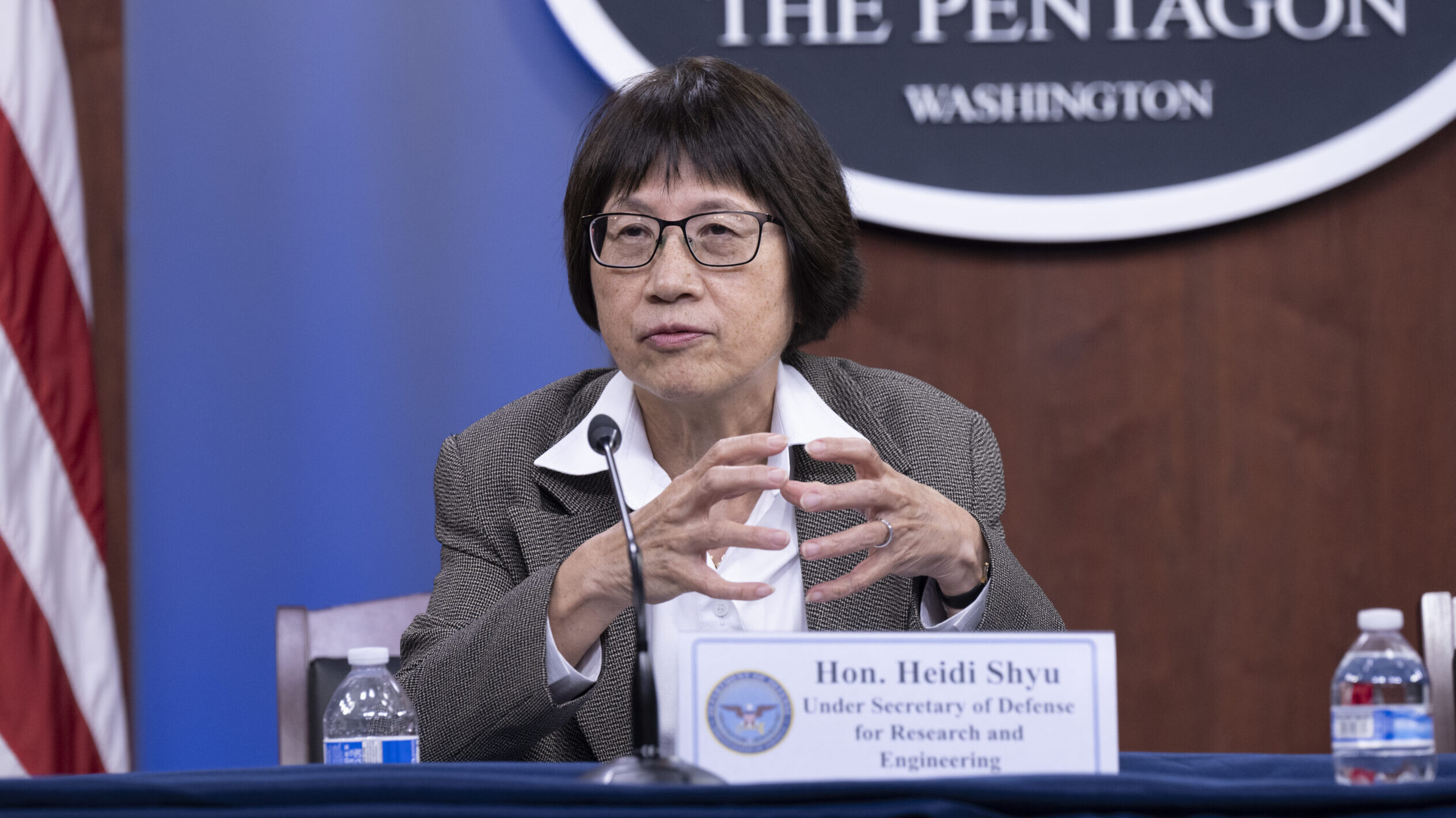
Under Secretary of Defense for Research and Engineering Heidi Shyu speaks during a press briefing announcing a university-affiliated research center initiative with historically Black colleges and universities, the Pentagon, Washington, D.C., June 27, 2022. (DoD photo by Lisa Ferdinando)
WASHINGTON — The Defense Department this year plans to start collaborating more closely with its Australian counterparts through a new round of technology experiments, the Pentagon’s under secretary of defense for research and engineering told reporters today.
Shyu said the US would work with Australia this year for the next round of Technology Readiness Experimentation (TREX), a key event meant to inform the DoD’s quick tech development Rapid Defense Experimentation Reserve (RDER) initiative. She offered scant details but said upcoming RDER experiments, taking place in 2025, will also take place in Australia.
RDER, an effort introduced by Shyu in 2021, is meant to address joint capability gaps and deliver emerging technologies quicker to warfighters.
Shyu said today that there will “absolutely” be another meeting of the Defense Management Acquisition Group (DMAG), a four-star board that includes representation from all military services, combatant commands and the joint staff, to assess successful technologies from a RDER experiment last year in Indiana that also involved Australia and the United Kingdom.
“Because we have stuff [continuously going] through the process … so the stuff, like over 30 items we tested in Indiana went to Northern Edge experimentation,” Shyu told reporters after her keynote at the Potomac Officers Club 10th Annual R&D Summit. “The stuff that graduated and approved … come up to the DMAG.”
Parts of that specific RDER experiment happened at Camp Atterbury, Ind., through TREX 2023, where six technologies were tested through tactical scenario demonstrations and a “disaster scenario” where resilient communications were disrupted, according to a press release. The technologies that proved to be useful from the experiments were presented to the DMAG that fall.
Although Shyu didn’t elaborate on which specific technologies made the cut during that time, she said at the time that the DMAG was assessing factors like whether one particular military service would be in charge of a specific technology or if every service would just buy the technologies it wanted.
“Because if you group it into one lead service, maybe you want to buy 50, he wants to buy 100, you want to buy three, but you’re going to pay for different price points, right?” she said Aug. 29. “If you lump it together to provide the service… it’s like going to Costco, right? Buying [in] bulk.”
Shyu said today that RDER experiments are ongoing this year. DoD wants to hold two rounds of the experiments every year, and Shyu has previously said they would start with focusing on the areas of long-range fires, predictive logistics and base defense.
Along with technology experimentation, Shyu said today during her keynote address that another area of increased focus this year will be on biomanufacturing. To that point, DoD is set to release a request for proposal (RFP) today for its distributed bio-industrial manufacturing investment program.
“This RFP will advance the Biden administration’s objective to build a sustainable, safe and secure American bio-economy, entering new investments in biomanufacturing,” Shyu said.
In September 2022, the White House released an executive order on advancing biotechnology and biomanufacturing innovation. As part of the executive order, the secretary of defense was tasked to submit a report assessing how biotechnology and biomanufacturing could strengthen the resilience of the country’s supply chains.
A year later in March, DoD released its Biomanufacturing Strategy and an accompanying request for information to industry asking domestic biomanufacturers for data on their technologies and their maturity. The strategy warned that biomanufacturing could move offshore like semiconductor manufacturing has.






















